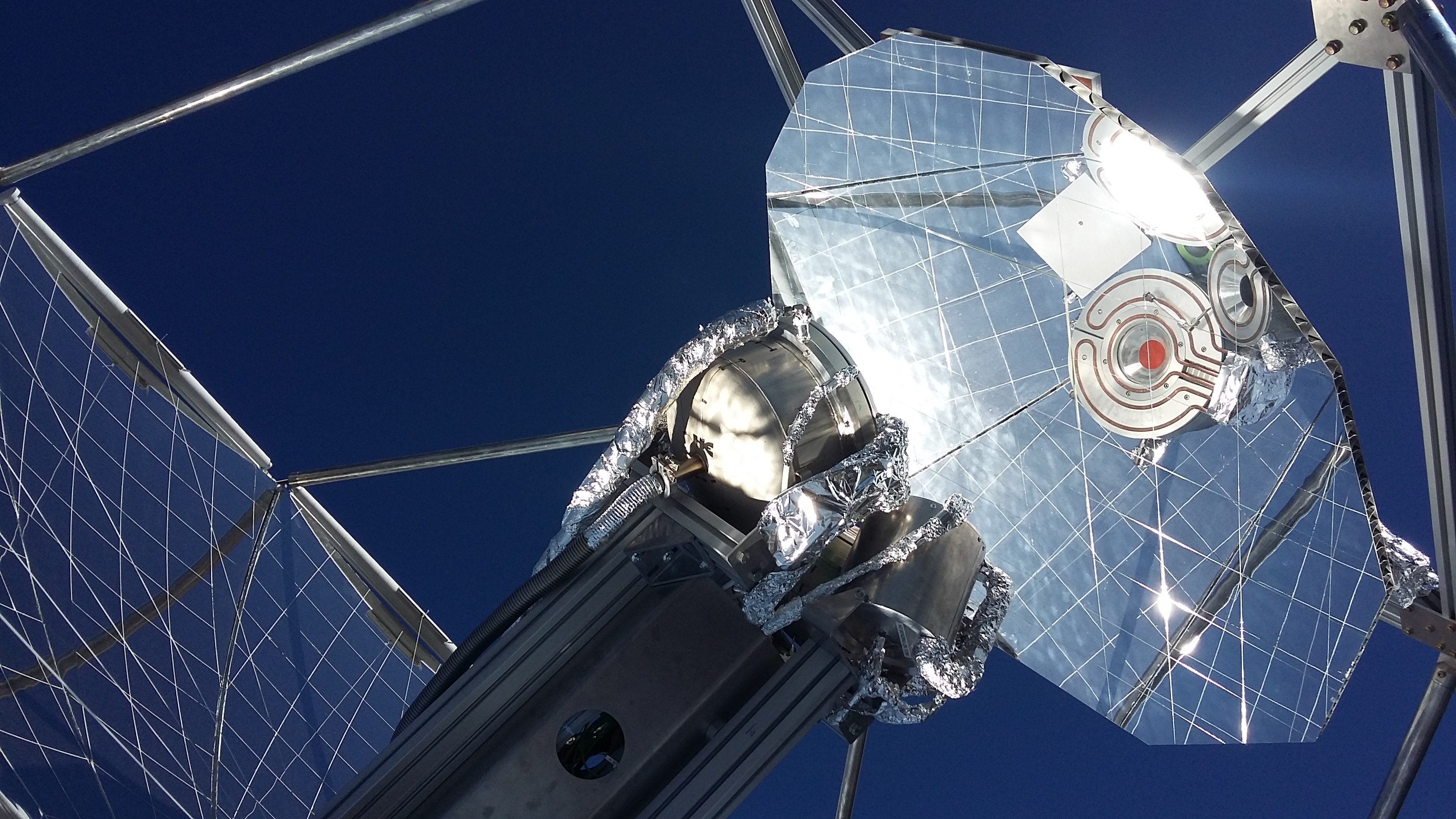News release
From:
Engineering: Creating fuel from thin air *IMAGE & VIDEO*
A pilot system for the generation of fuel from sunlight and air, which is shown to operate under field conditions, is reported in Nature this week. The work may pave the way towards producing carbon-neutral hydrocarbon fuels, but substantial optimization and upscaling of the process would be needed.
Aviation and shipping currently contribute approximately 8% of total carbon dioxide emissions attributed to human activity. A promising alternative fuel source is drop-in fuels, synthetic versions of petroleum-derived liquid hydrocarbons (kerosene, gasoline or diesel, for example) made from water and carbon dioxide with the help of solar energy. Individual steps of the solar fuel production process have been demonstrated, but the implementation of the full, optimized system in real-world conditions has been challenging.
Aldo Steinfeld and colleagues describe a solar fuel system, located on the roof of a laboratory, that is made up of three essential units: a direct air capture unit that extracts carbon dioxide and water from ambient air; the solar redox unit that uses solar energy to convert carbon dioxide and water into a mixture of carbon monoxide and hydrogen (syngas); and a gas-to-liquid unit that converts syngas to liquid hydrocarbons or methanol. The experimental system operates successfully and stably under intermittent solar irradiation, producing 32 millilitres of methanol in a typical 7-hour-day run, demonstrating the technical viability of a solar fuel production process.
The authors calculate a scheme for scaling up their system that could potentially satisfy the global demand for aviation kerosene consumption (414 billion litres in 2019). They estimate that the total land footprint of all solar fuel production plants needed would be 45,000 km2, equivalent to around 0.5% of the area of the Sahara Desert. However, such fuels produced by the first generation of commercial solar plants would be more expensive than the fossil kerosene they are meant to replace. Given the high initial investment costs needed to set up solar fuel production plants, policy support would be required to enable widespread deployment of these fuels leading to concomitant cost reductions, the authors conclude.
Multimedia




 International
International



